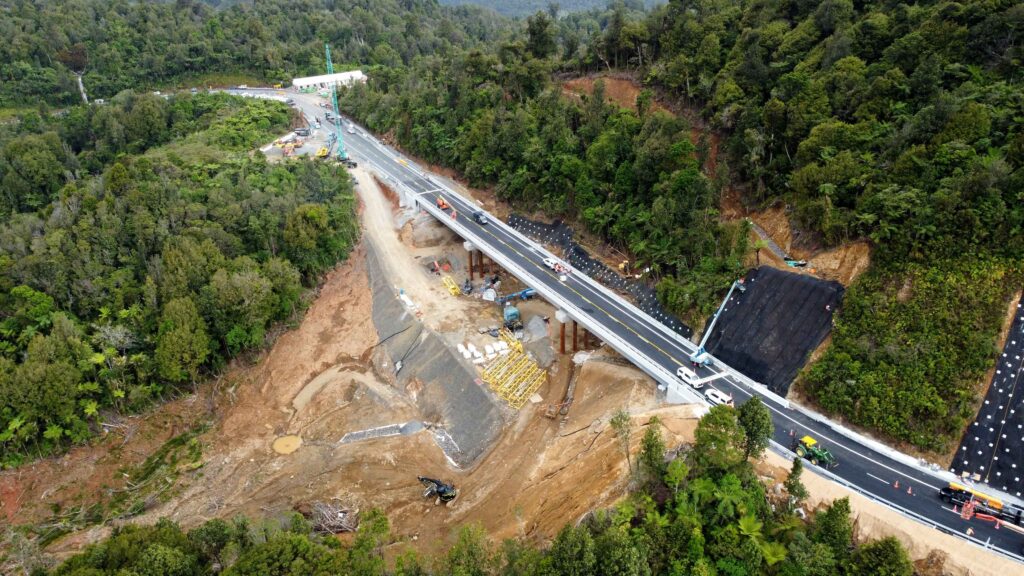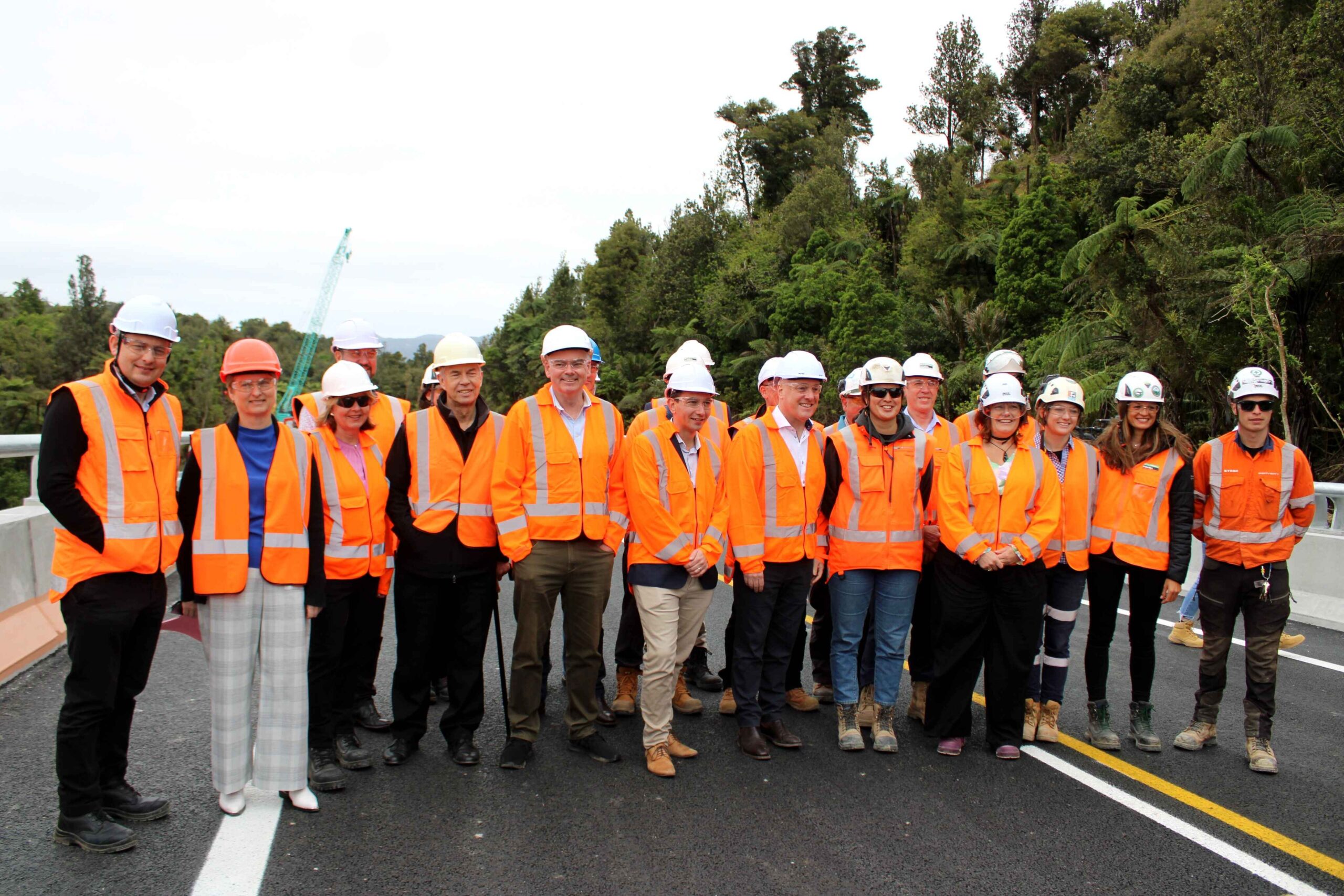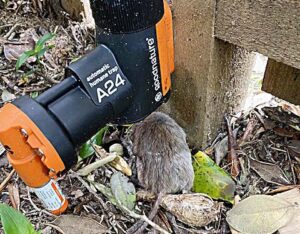As a vibrant sign was erected at the Kōpū-Hikuai roundabout thanking the team behind the quick construction of the Taparahi Bridge, a celebration was wrapping up in Thames.
Present was the district’s mayor, Len Salt, the local MP Scott Simpson, Waka Kotahi New Zealand Transport Agency chief executive Nicole Rosie, and a myriad of main players who helped reconnect the Coromandel Peninsula in record time.
“Who would have thought that a bridge, a bridge, a structure of concrete and steel, could generate such an emotional response for all the people the loss of the connection had affected? What it means is it’s not about the infrastructure,” Mayor Salt said, “it’s about the effect it has on people in the community. And it is emotional.”
The celebration was held on December 15, after a State Highway 25A site visit from Prime Minister Christopher Luxon, and five days before the roading network was set to reopen.
Its purpose was to acknowledge the people behind the project, and it was evident on the day that people were the most valuable tool in the Taparahi Bridge’s construction.
The project’s contract manager Ashley Cooper, from Fulton Hogan, said he felt “a huge amount of pleasure and pride”.
“The project has been an absolute team effort from start to finish; it wouldn’t have been possible without the team,” he said. “As a team, you couldn’t have asked for anything better. Everyone was just focused, had driven it, and the incredible support from the community blew everybody away.”

Up at the former slip site, where the Kōpū-Hikuai Road had been closed since late January, the feeling was much the same.
Construction professionals such as supervisor Byron Wensor, site engineer Taylor Auld, project engineer Alison Craigie, site engineer Laura Gover, and site engineer Pieter Ruthven were passionate about the task at hand.
“Everyone that has been on this project loves what they do and are really good at what they do,” Taylor told The Profile, “and that’s why we’ve been able to build the bridge to the quality, and in the time, that we have.
“[People] see the finished project and it can be hard to understand how much time, work, and love goes into things like this; this is what we do, but it does take a lot of effort.”
For Taylor, the bridge construction was a chance to return home to Thames, while Alison and Laura relocated from Wanaka to work on the project. They’ve been residing in Thames for around four months and said they were “really surprised and impressed” with the town.
During his tour of the new bridge, Prime Minister Christopher Luxon, who was joined by transport minister Simeon Brown, also commended the people behind the project.
“This is a project that, under normal times, would take anywhere from 12 to 18 months to get done, and it’s been done ahead of time, under budget, and it’s happened because a team of people have come together and have done an incredible thing,” he said.
“When you talk to the workers involved here, whether they be engineers, or abseilers trying to put 12-metre drills and nails into the side of a bank, there’s incredible skill.”
The project was operating seven days a week, 24 hours a day. Now that it has reopened, as of Wednesday, the reconnection will see holidaymakers flock to the likes of Whangamatā, Pāuanui and Hahei in time for the busy summer season.
“It was actually almost emotional to be up [at the site]… to see it finished,” Coromandel MP Scott Simpson said. “When we saw it the first time, it was literally a gaping, moving, water-gushing hole that looked like a lunar landscape, and now it’s not, and I can’t wait to drive that piece of road very soon.”
The state highway suffered significant damage after the North Island’s major storm event in late January.
The cost of the bridge is expected to be approximately $43 million, under the initial $50 million estimate, with an additional $25m spent to clear slips, replace the original undersized culvert and undertake crucial road maintenance work along the rest of the length of SH25A.
Waka Kotahi said once the road opens, the area around the new bridge would remain an active worksite, and there would be temporary traffic management with a speed restriction through the area.
It will not be safe to stop and sightsee on or near the bridge, and road users are asked to keep moving through the site.
BY KELLEY TANTAU





